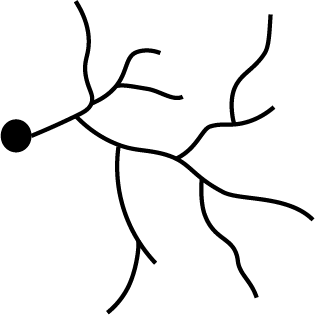
Installation view, Aranya Art Center, 2023
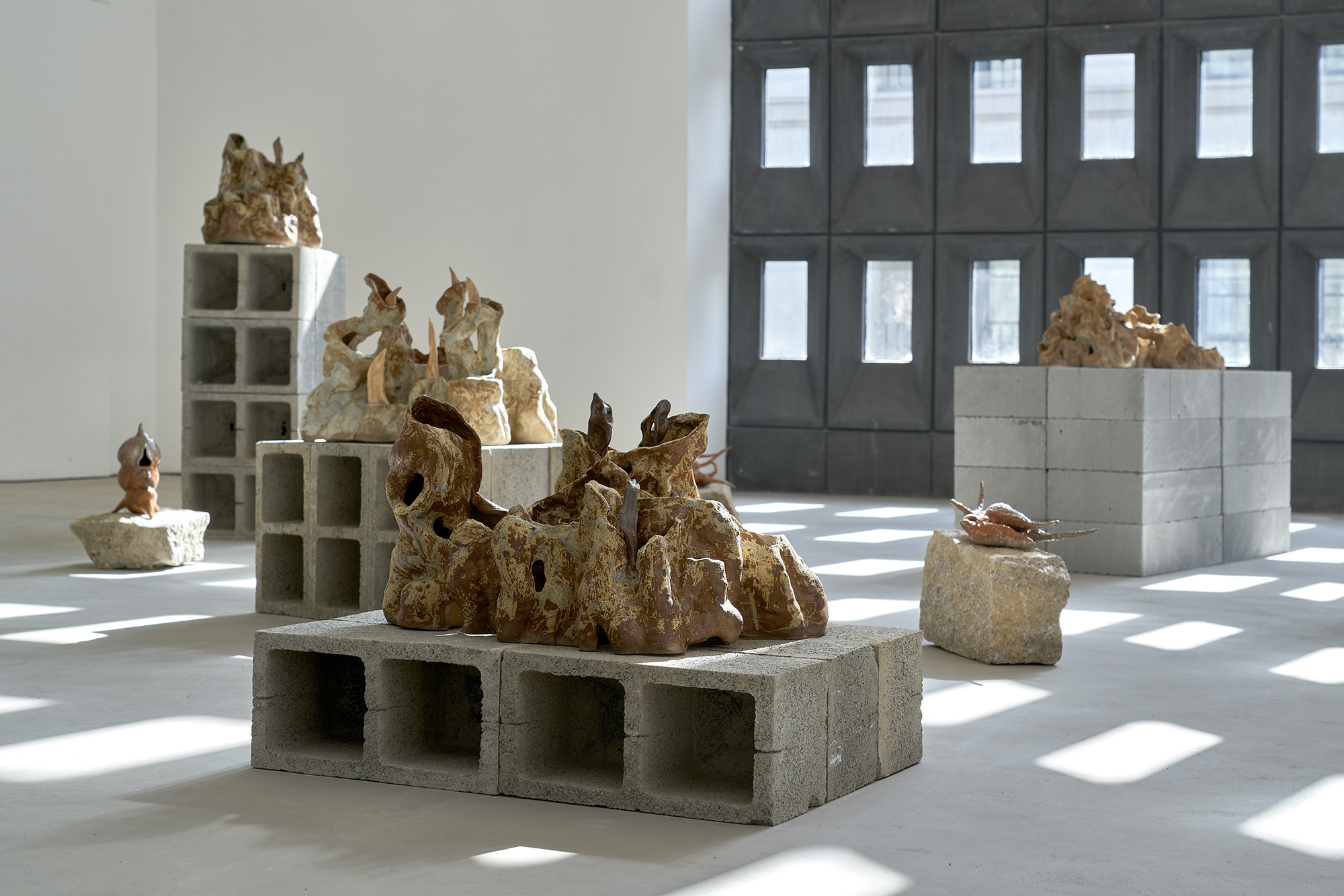
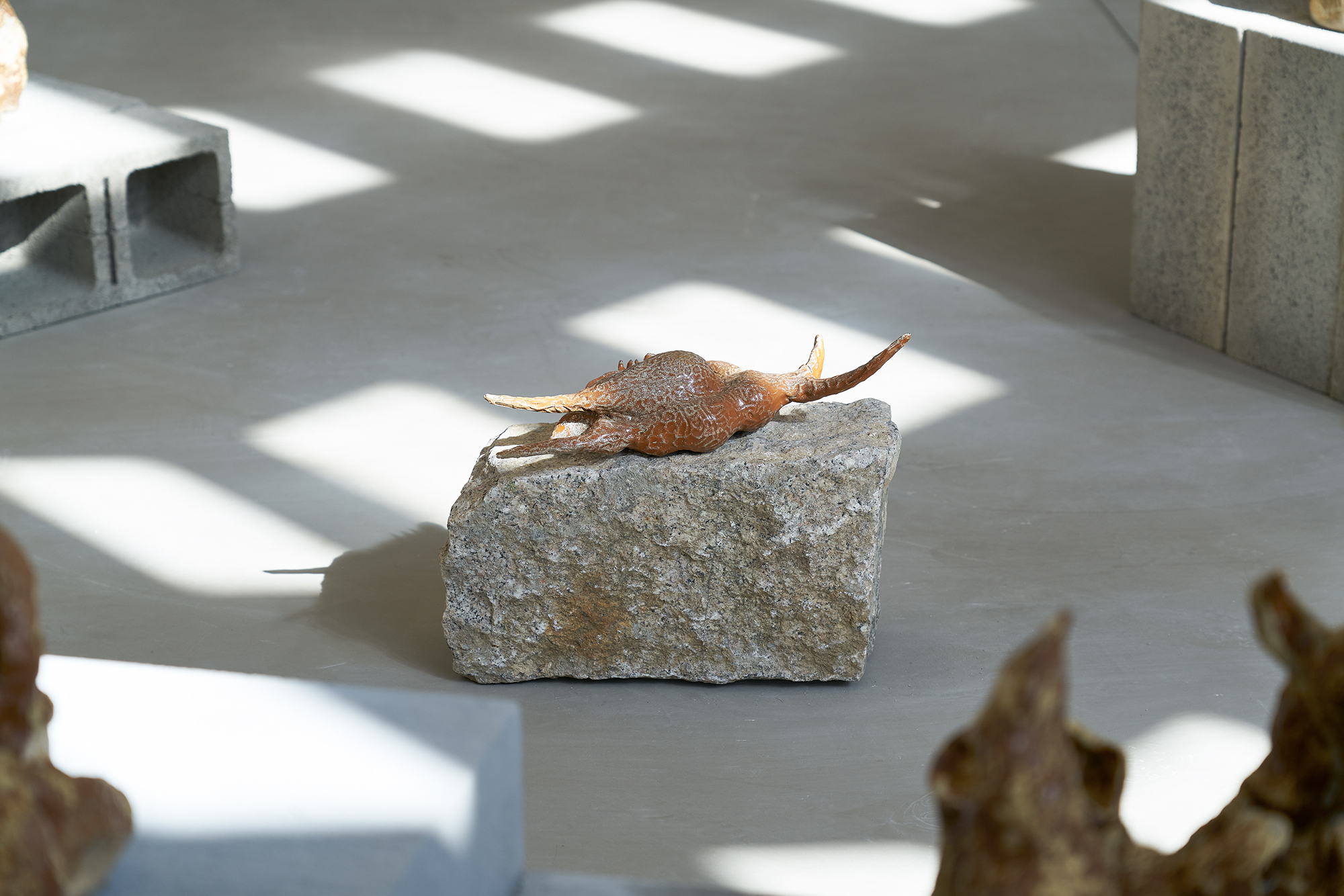
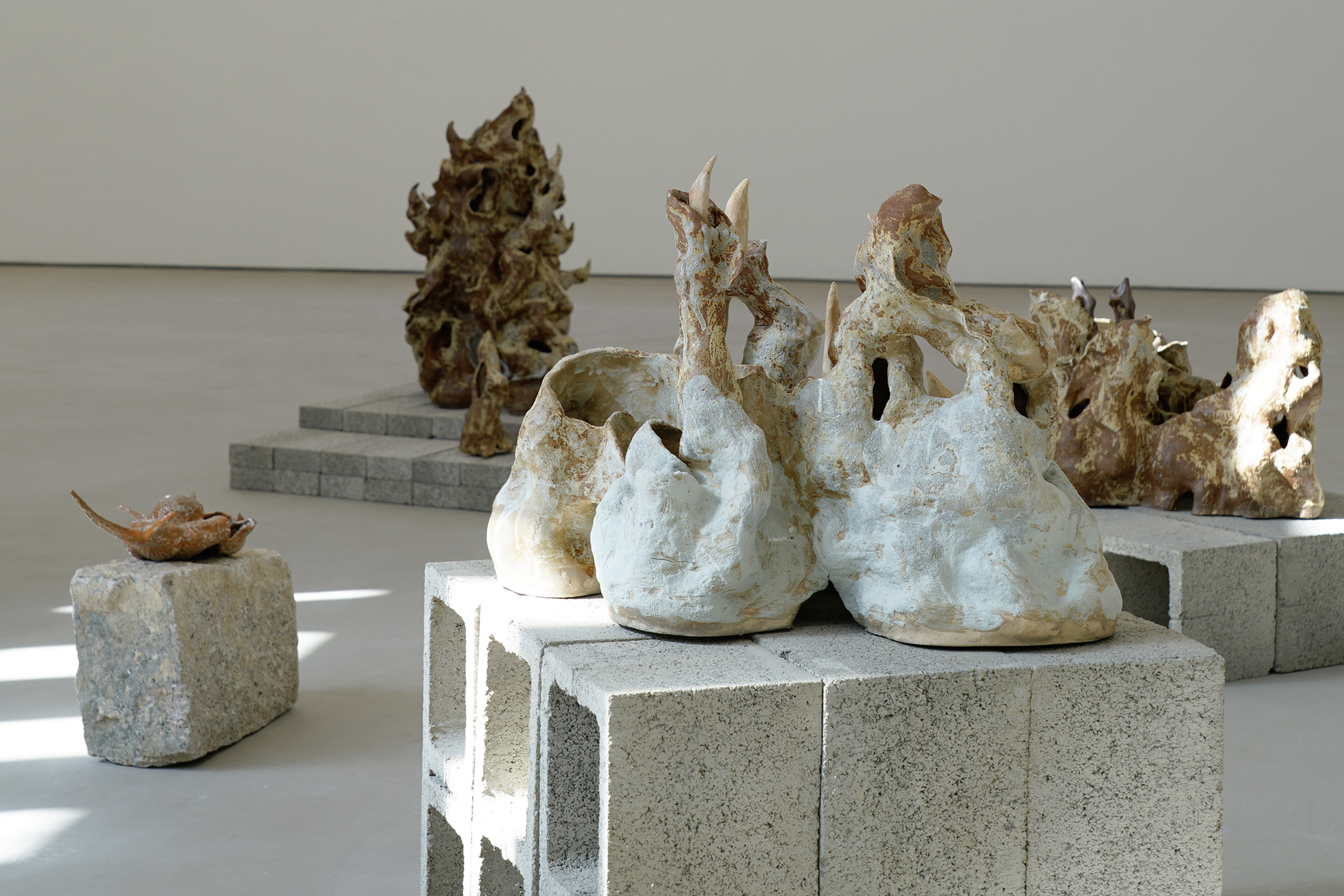
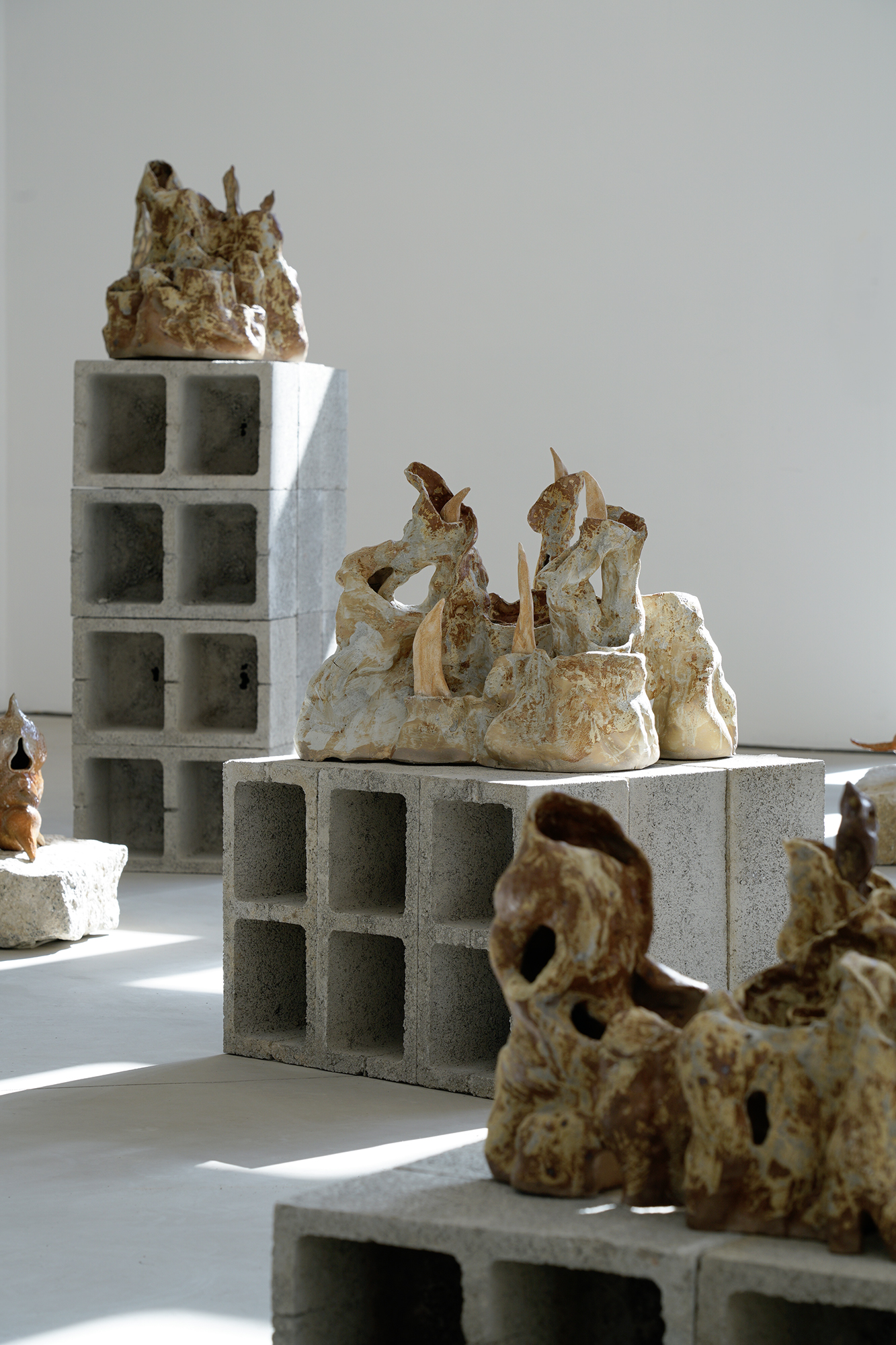
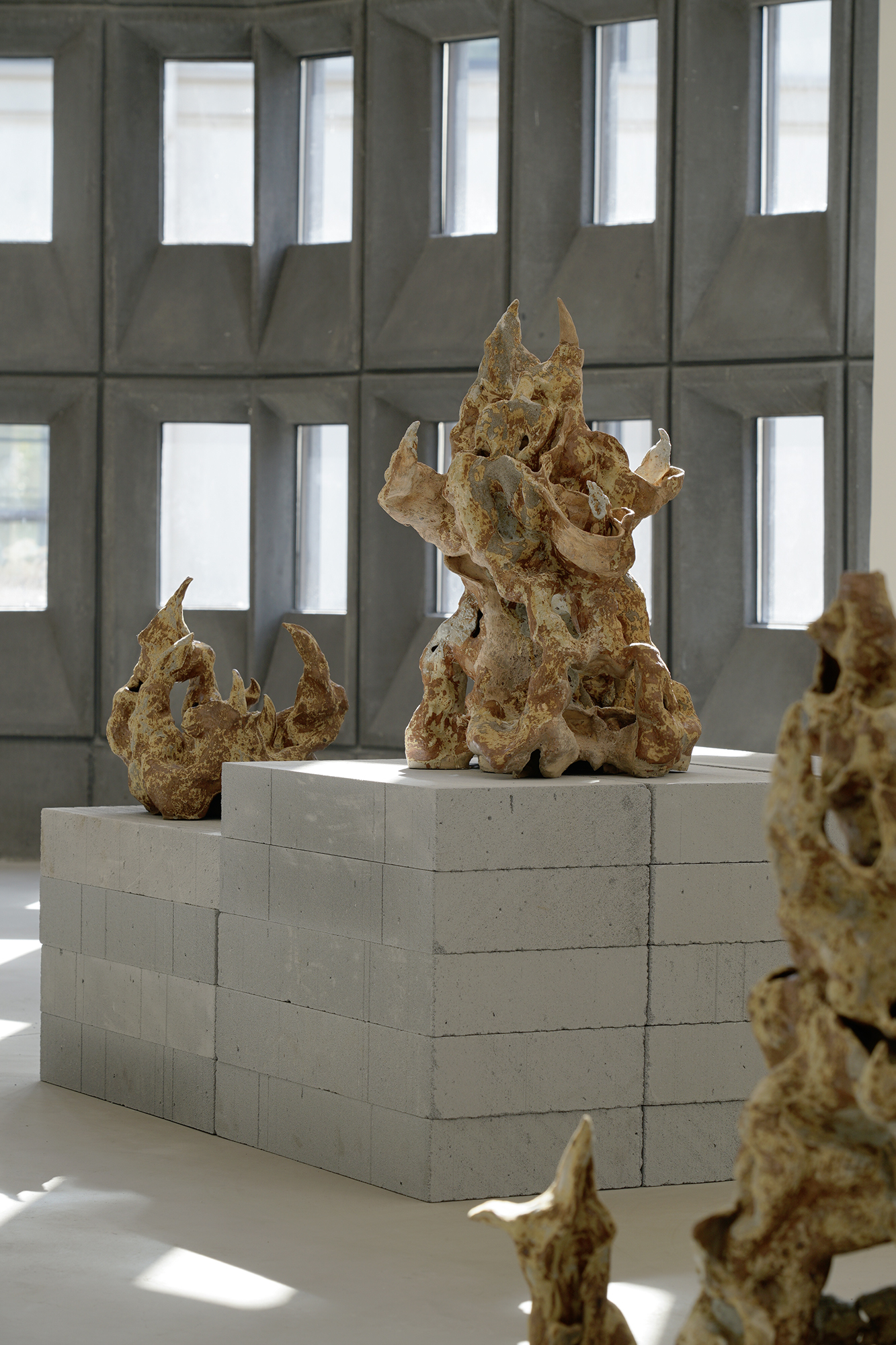
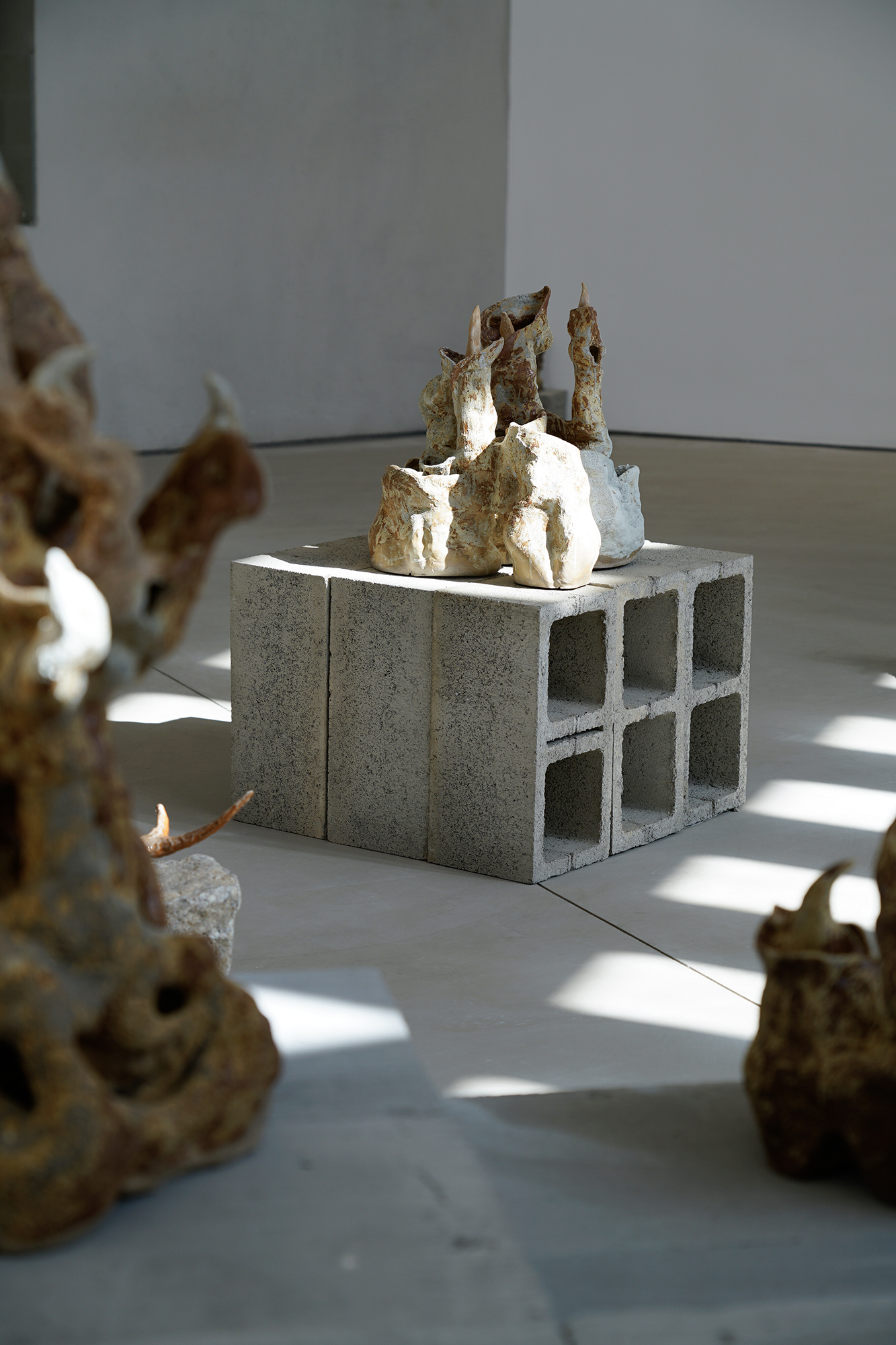
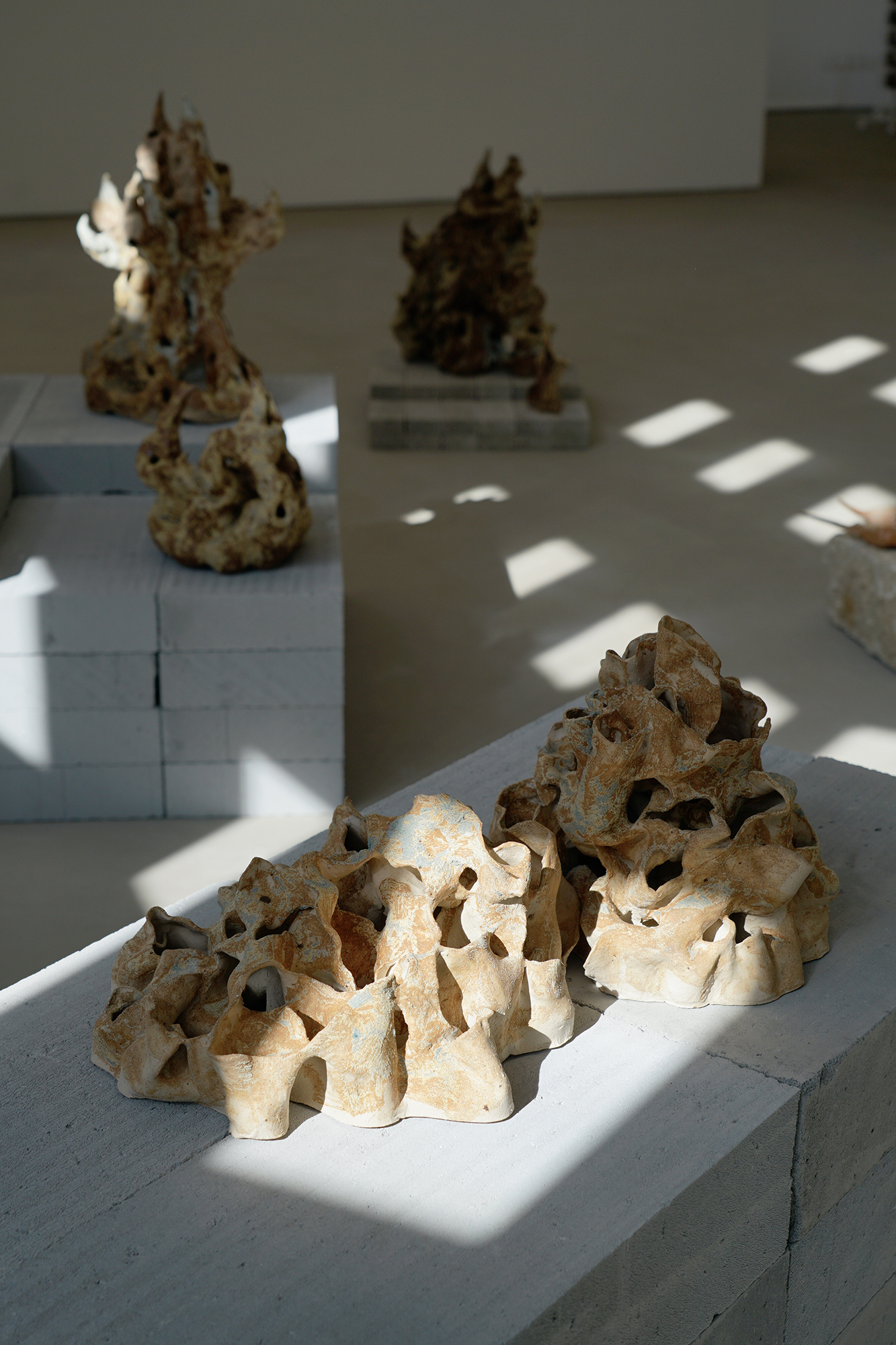
 Spine, 2023, stoneware, phosphorite, phosphate ore, dimensions variable
Spine, 2023, stoneware, phosphorite, phosphate ore, dimensions variable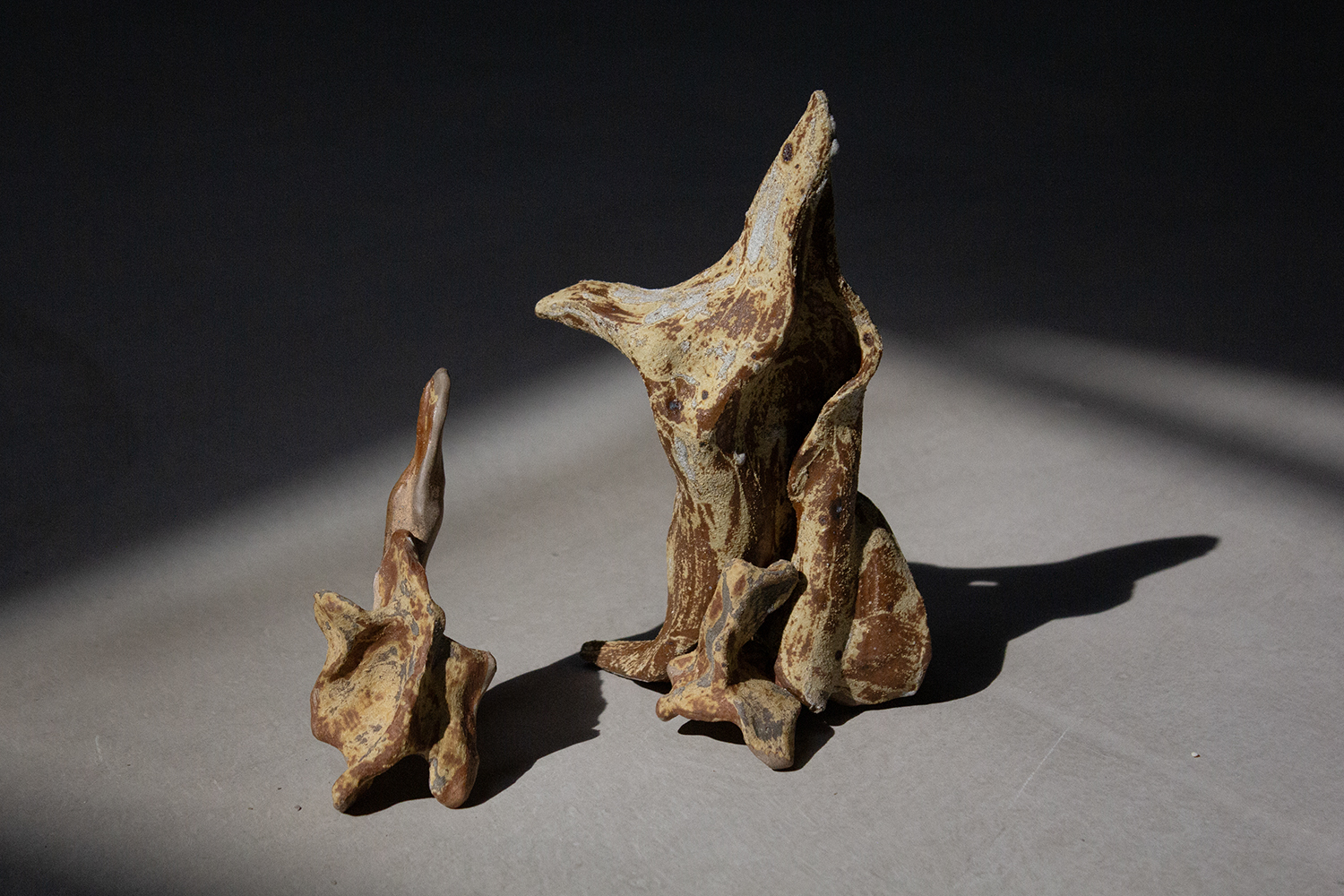
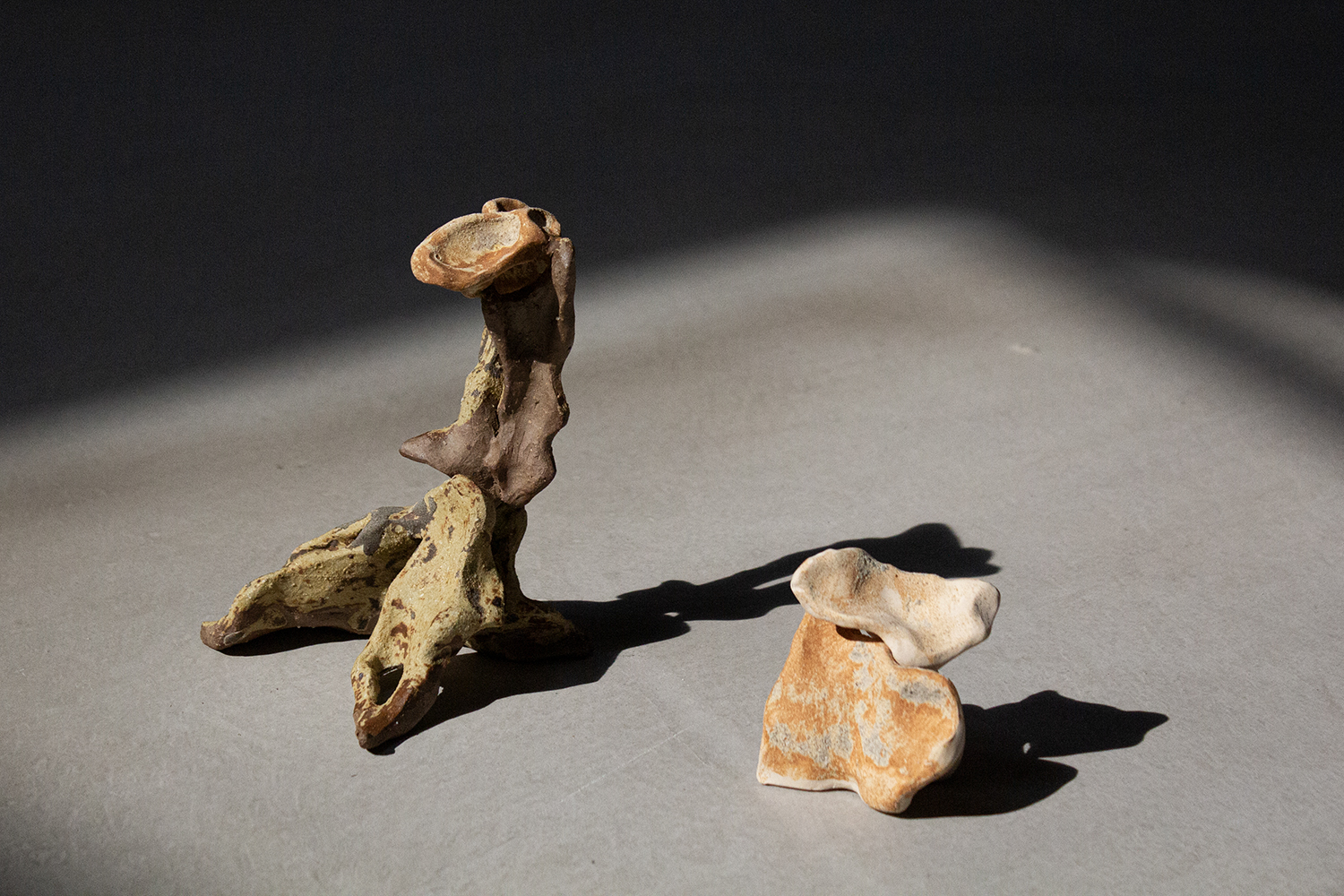

 Foram I, 2023, glazed stoneware, 52 x 19 x 30 cm
Foram I, 2023, glazed stoneware, 52 x 19 x 30 cm foram II, 2023, glazed stoneware, 39 x 30 x 10 cm
foram II, 2023, glazed stoneware, 39 x 30 x 10 cmOdont, Spine, Foram
2023
Stoneware, phosphorite
Dimensions variable
This body of work originates from the tracing of the circulation of matter between inorganic and organic bodies: from free-floating elements in shallow seas billions of years ago, to supporting structures for genetic material and metabolism in living organisms; from teeth and bones gradually emerging inside soft-bodied organisms to the first group of vertebrates venturing onto land; from phosphorite deposits formed by the accumulation of petrified remains to the continuous seepage and return of mining waste in geological strata. It begins with the biological evolution driven by the competition for phosphorus in the Cambrian oceans and continues with the extraction, mining, transformation, and exile of phosphorus in the human era. These two threads intertwine in sculptural form, revealing the unfathomable entanglement of ancient kinship and alienating residues in deep time. In the process of conceiving the artwork, the artist traveled to Weng'an, Guizhou, to visit a fossil group preserving primitive life from 600 million years ago through phosphate mineralization. In the same region, phosphate ore and solid waste phosphogypsum accumulated from tailings were collected for a series of material experiments.
Foram series is drawn from the single-celled marine planktonic organism foraminifera, which has been living in the open ocean since the Cambrian period. They are capable of secreting calcium or silica to form shells, and their remains contribute to the formation of thick layers of chalk, limestone, and reefs. As one of the oldest protists, their inorganic bodies hold clues to climate and ecological changes. The original sculptures are digitally modeled based on machine learning-generated hybrid foram species and then recreated through 3D printing, mold-making and casting, assembling, and hand sculpting to create mutating forms.
